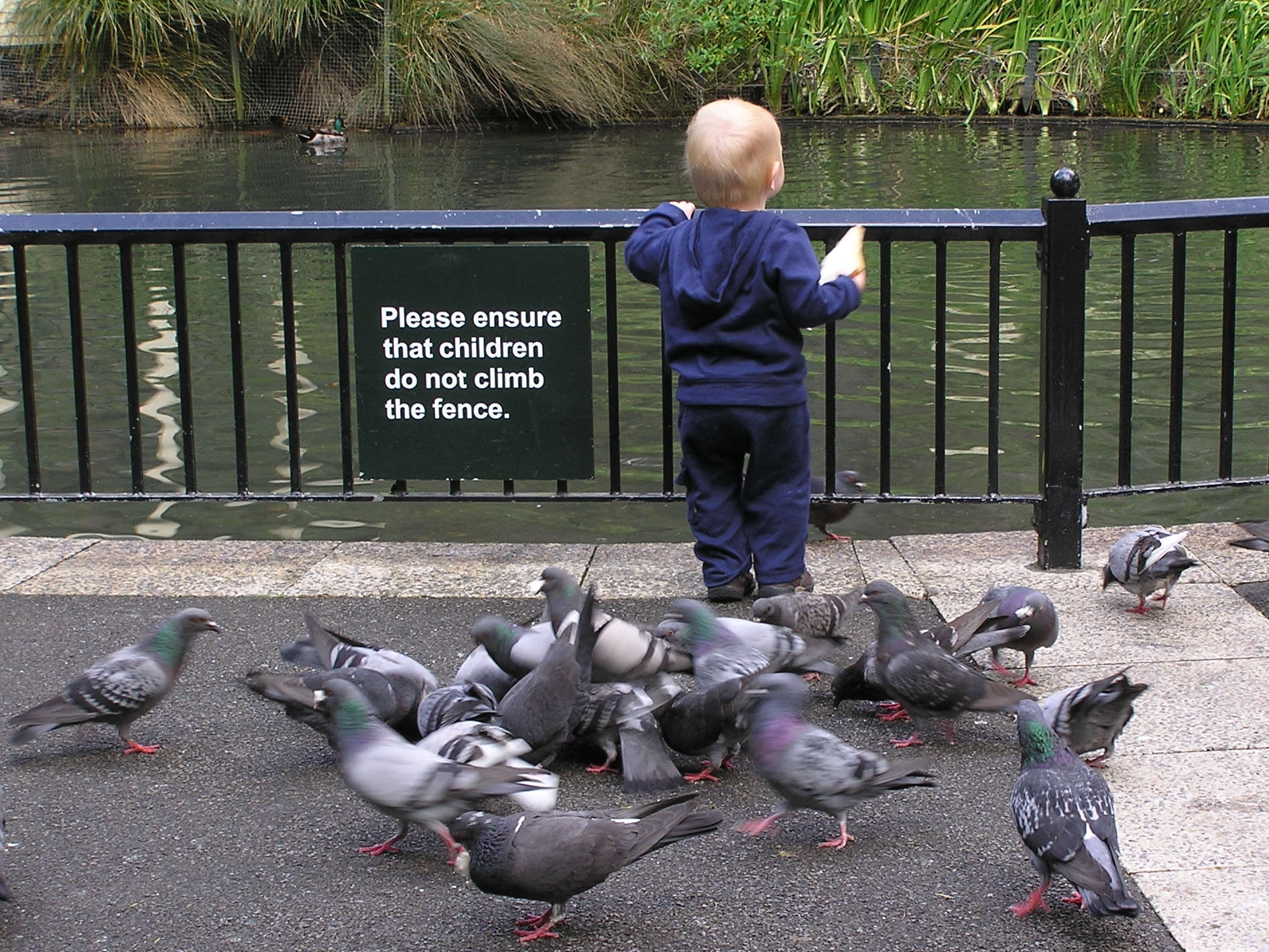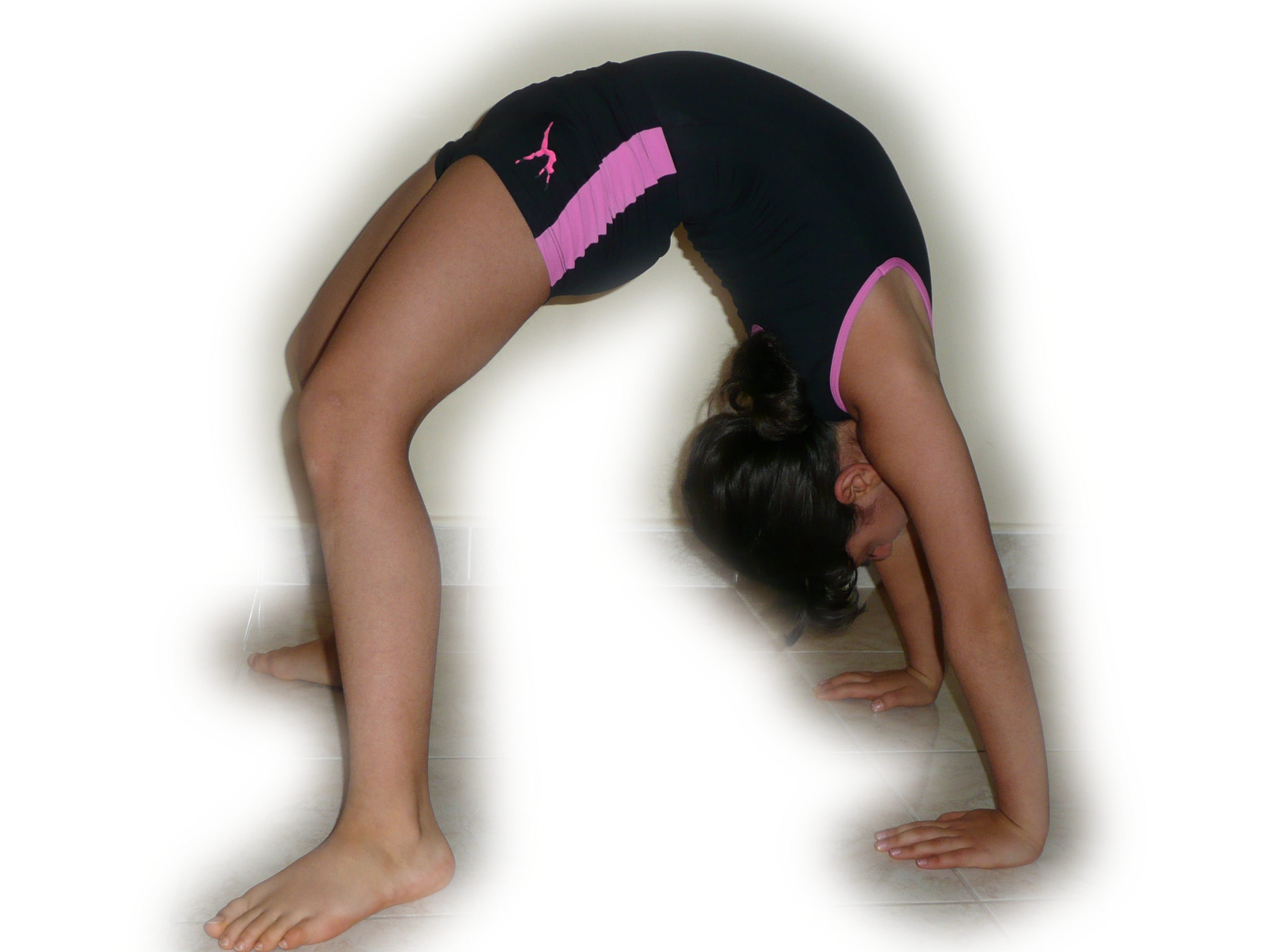|
Crawling (human)
Crawling or quadrupedal movement is a method of human locomotion that makes use of all four limbs. It is one of the earliest gaits learned by human infants, and has similar features to four-limbed movement in other primates and in non-primate quadrupeds. When crawls are used Crawling is used mainly: *When a person cannot yet walk because of being an infant *When a person cannot walk due to disability, being wounded, sick, or drunk *In very low places (caves, under a table, in a mine, etc.). Sometimes underground miners need to crawl long distances during their work *When searching for something on the ground *To get down to the ground in gardening, for maintenance or other work-related purposes which require a good reach on the ground *For stealth (camouflage and quietness) *To avoid being hit by gunfire *To lower the field of vision *As an exercise *As a token of submission *For fun or comical purposes *To reduce the risk of smoke inhalation during a fire In infants Infan ... [...More Info...] [...Related Items...] OR: [Wikipedia] [Google] [Baidu] |
Childproof
Childproofing (also called baby proofing) is the act of making an environment or object safe for children. This reduces risks to a level considered acceptable by a society, an institution, or to specific parents. Childproofing may include restriction of children to safe areas or preventing children from reaching unsafe areas. This can be accomplished by the parent or by hiring a professional for assistance. Childproofing is gaining more prominence now that parents have greater access to information on child injury and a wide variety of products are available to help prevent it. It has become so top-of-mind for parents that even hotels and child-friendly resorts are offering "child-proof" rooms. Electrical safety One of the more common concerns of child safety is the potential for electrocution or serious injury when an object, such as a key or metal paper clip, is inserted into an electrical outlet. Many childproofing devices exist that block access to the electrical outlets. ... [...More Info...] [...Related Items...] OR: [Wikipedia] [Google] [Baidu] |
The Exorcist (film)
''The Exorcist'' is a 1973 American supernatural horror film directed by William Friedkin from a screenplay by William Peter Blatty, based on The Exorcist (novel), his 1971 novel. The film stars Ellen Burstyn, Max von Sydow, Jason Miller (playwright), Jason Miller, and Linda Blair, and follows the Spirit possession, demonic possession of a young girl and the attempt to rescue her through an exorcism by two Catholic priests. Blatty, who also produced, and Friedkin, his choice as director, had difficulty casting the film. Their choice of relative unknowns Burstyn, Blair, and Miller, instead of major stars, drew opposition from executives at Warner Bros. Pictures, Warner Bros. Principal photography was also difficult. Many cast and crew were injured, some died, and unusual accidents delayed shooting. Production took twice as long as scheduled and cost almost three times the initial budget; the many mishaps have led to a belief that the film was cursed. ''The Exorcist'' was theatr ... [...More Info...] [...Related Items...] OR: [Wikipedia] [Google] [Baidu] |
Horror Film
Horror is a film genre that seeks to elicit physical or psychological fear in its viewers. Horror films often explore dark subject matter and may deal with Transgressive art, transgressive topics or themes. Broad elements of the genre include Monster movie, monsters, Apocalyptic and post-apocalyptic fiction, apocalyptic events, and Religion, religious or Folk horror, folk beliefs. Horror films have existed History of horror films, since the early 20th century. Early Inspirations predating film include folklore; the religious beliefs and superstitions of different cultures; and the Gothic fiction, Gothic and Horror fiction, horror literature of authors such as Edgar Allan Poe, Bram Stoker, and Mary Shelley. From its origins in silent films and German expressionist cinema, German Expressionism, horror became a codified genre only after the release of Dracula (1931 English-language film), ''Dracula'' (1931). Many sub-genres emerged in subsequent decades, including body horror, comed ... [...More Info...] [...Related Items...] OR: [Wikipedia] [Google] [Baidu] |
Gymnastic Bridge
The bridge (also called gymnastic bridge) is an exercise. Many variations of this exercise are employed throughout the world, most commonly the balancing of the body on the hands and the feet. It is intended to improve lower back and gluteus strength. Examples of bridging in sportive or self-defense applications are seen in Kung Fu, Judo, Brazilian jiu jitsu, Capoeira, mixed martial arts, and wrestling. In yoga, this particular pose is called Chakrasana, Urdhva Dhanurasana, or Wheel, while the Westernized nickname "Bridge pose" refers to a less rigorous supine backbend called Setu Bandha Sarvangasana, in which the body is fairly straight from knees to shoulders, and most of the bend is in the knees. Variations The bridging exercise is not a singular movement, but includes a wide range of variations and progressions. There is no single agreed upon "standard" variation of the bridge like with other common bodyweight exercises. Bridge hold The bridge hold is a static var ... [...More Info...] [...Related Items...] OR: [Wikipedia] [Google] [Baidu] |
Body Posture
Human positions refer to the different physical configurations that the human body can take. There are several synonyms that refer to human positioning, often used interchangeably, but having specific nuances of meaning. *''Position'' is a general term for a configuration of the human body. *''Posture'' means an intentionally or habitually assumed position. *''Pose'' implies an artistic, aesthetic, athletic, or spiritual intention of the position. *''Attitude'' refers to postures assumed for purpose of imitation, intentional or not, as well as in some standard collocations in reference to some distinguished types of posture: " Freud never assumed a fencer's attitude, yet almost all took him for a swordsman." *''Bearing'' refers to the manner of the posture, as well as of gestures and other aspects of the conduct taking place. Basic positions While not moving, a human is usually in one of the following basic positions: All-fours This is the static form of crawling which is a ... [...More Info...] [...Related Items...] OR: [Wikipedia] [Google] [Baidu] |
Foot
The foot (: feet) is an anatomical structure found in many vertebrates. It is the terminal portion of a limb which bears weight and allows locomotion. In many animals with feet, the foot is an organ at the terminal part of the leg made up of one or more segments or bones, generally including claws and/or nails. Etymology The word "foot", in the sense of meaning the "terminal part of the leg of a vertebrate animal" comes from Old English ''fot'', from Proto-Germanic *''fot'' (source also of Old Frisian ''fot'', Old Saxon ''fot'', Old Norse ''fotr'', Danish ''fod'', Swedish ''fot'', Dutch ''voet'', Old High German ''fuoz'', German ''Fuß'', Gothic ''fotus'', all meaning "foot"), from PIE root *''ped-'' "foot". The plural form ''feet'' is an instance of i-mutation. Structure The human foot is a strong and complex mechanical structure containing 26 bones, 33 joints (20 of which are actively articulated), and more than a hundred muscles, tendons, and ligaments.Podiatry Chan ... [...More Info...] [...Related Items...] OR: [Wikipedia] [Google] [Baidu] |
Bear
Bears are carnivoran mammals of the family (biology), family Ursidae (). They are classified as caniforms, or doglike carnivorans. Although only eight species of bears are extant, they are widespread, appearing in a wide variety of habitats throughout most of the Northern Hemisphere and partially in the Southern Hemisphere. Bears are found on the continents of North America, South America, and Eurasia. Common characteristics of modern bears include large bodies with stocky legs, long snouts, small rounded ears, shaggy hair, plantigrade paws with five nonretractile claws, and short tails. While the polar bear is mostly carnivorous, and the giant panda is mostly herbivorous, the remaining six species are omnivorous with varying diets. With the exception of courtship display, courting individuals and mothers with their young, bears are typically solitary animals. They may be diurnality, diurnal or nocturnal and have an excellent sense of smell. Despite their heavy build and awk ... [...More Info...] [...Related Items...] OR: [Wikipedia] [Google] [Baidu] |
May Squadron Fitness Challenge 120524-F-KB808-095
May is the fifth month of the year in the Julian and Gregorian calendars. Its length is 31 days. May is a month of spring in the Northern Hemisphere, and autumn in the Southern Hemisphere. Therefore, May in the Southern Hemisphere is the seasonal equivalent of November in the Northern Hemisphere and vice versa. Late May typically marks the start of the summer vacation season in the United States (Memorial Day) and Canada (Victoria Day) that ends on Labor Day, the first Monday of September. May (in Latin, ''Maius'') was named for the Greek goddess Maia, who was identified with the Roman era goddess of fertility, Bona Dea, whose festival was held in May. Conversely, the Roman poet Ovid provides a second etymology, in which he says that the month of May is named for the ''maiores,'' Latin for "elders", and that the following month (June) is named for the ''iuniores,'' or "young people" (''Fasti VI.88''). Eta Aquariids meteor shower appears in May. It is visible from about ... [...More Info...] [...Related Items...] OR: [Wikipedia] [Google] [Baidu] |
Silhouette
A silhouette (, ) is the image of a person, animal, object or scene represented as a solid shape of a single colour, usually black, with its edges matching the outline of the subject. The interior of a silhouette is featureless, and the silhouette is usually presented on a light background, usually white, or none at all. The silhouette differs from an line art, outline, which depicts the edge of an object in a linear form, while a silhouette appears as a solid shape. Silhouette images may be created in any visual artistic medium, but were first used to describe pieces of cut paper, which were then stuck to a backing in a contrasting colour, and often framed. Cutting portraits, generally in profile, from black card became popular in the mid-18th century, though the term ''silhouette'' was seldom used until the early decades of the 19th century, and the tradition has continued under this name into the 21st century. They represented a cheap but effective alternative to the portrait m ... [...More Info...] [...Related Items...] OR: [Wikipedia] [Google] [Baidu] |
Relief (location)
Relief is a sculptural method in which the sculpted pieces remain attached to a solid background of the same material. The term ''relief'' is from the Latin verb , to raise (). To create a sculpture in relief is to give the impression that the sculpted material has been raised above the background plane. When a relief is carved into a flat surface of stone (relief sculpture) or wood (relief carving), the field is actually lowered, leaving the unsculpted areas seeming higher. The approach requires chiselling away of the background, which can be time-intensive. On the other hand, a relief saves forming the rear of a subject, and is less fragile and more securely fixed than a sculpture in the round, especially one of a standing figure where the ankles are a potential weak point, particularly in stone. In other materials such as metal, clay, plaster stucco, ceramics or papier-mâché the form can be simply added to or raised up from the background. Monumental bronze reliefs are ma ... [...More Info...] [...Related Items...] OR: [Wikipedia] [Google] [Baidu] |








